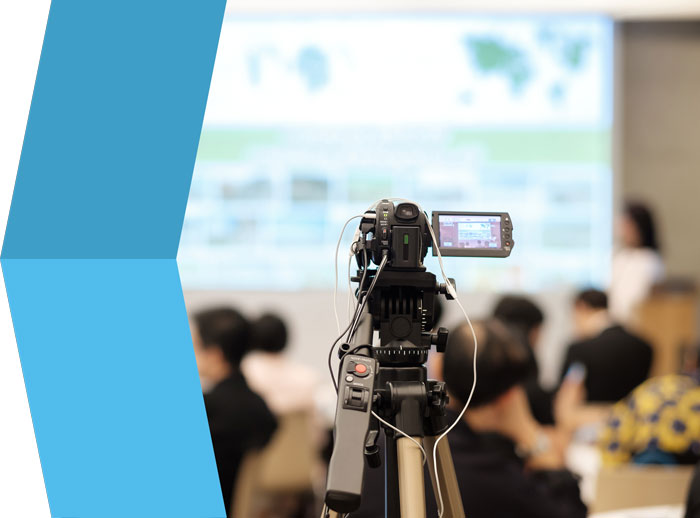Comprehensive Legal Videography for Courtroom Evidence.
Comprehensive Legal Videography for Courtroom Evidence.
Blog Article
Why Lawful Videography Is Essential for Accurate Legal Record-Keeping
In the realm of legal proceedings, the precision of record-keeping is critical, and lawful videography emerges as a crucial tool in this context. As we explore the multifaceted benefits of legal videography, one should consider its effects for the future of judicial integrity and transparency.
Value of Visual Evidence
Developing the significance of aesthetic evidence in lawful proceedings is extremely important for ensuring accurate record-keeping and enhancing the total integrity of the judicial process. Aesthetic proof functions as an important device in recording events, problems, and other significant information that might be essential to an instance. Unlike written accounts, which are prone to analysis and predisposition, visual recordings offer a goal, unalterable representation of facts as they occurred.
This type of proof can record a selection of components, including witness habits, ecological context, and physical proof, every one of which may affect judicial results. By offering a clear and detailed visual story, lawful videography removes uncertainty and helps to preserve the authenticity of the evidence.
Moreover, visual evidence can be critical in lowering conflicts over factual discrepancies, as it permits a straight comparison against testament and other documented records. In an era where digital modern technology is significantly prevalent, the ability to present visual evidence efficiently can dramatically enhance the general high quality of lawful process. Inevitably, the unification of aesthetic proof not only reinforces the documents process but likewise reinforces public count on the judicial system by promoting openness and liability.
Enhancing Testimony Credibility
The combination of lawful videography right into courtroom process considerably improves the integrity of witness statement. By recording the nuances of spoken and non-verbal interaction, video clip recordings offer an even more thorough depiction of a witness's behavior, emotions, and dependability. This visual documents allows jurors to observe the witness's body movement, facial expressions, and overall carriage, which are vital components that can affect their assumption of testimony trustworthiness.

In addition, the existence of video footage can prevent witnesses from offering deceptive or exaggerated declarations, as they know that their testament is being tape-recorded. This liability strengthens the stability of the judicial procedure. Eventually, legal videography acts as a vital tool in ensuring that witness statement is not just properly depicted but also watched with enhanced credibility by all celebrations link involved.
Comprehensive Document Preservation
Comprehensive record conservation is essential for keeping the stability of lawful process. Lawful videography acts as a vital device in this process, providing a precise aesthetic and auditory account of statements, depositions, and other crucial minutes in a case. Unlike standard written records, video recordings capture the subtleties of body language, tone, and emotion, which are crucial for recognizing the context and intent behind declarations made throughout lawful procedures.
Including audiovisual aspects into record-keeping boosts the conservation of evidence, ensuring that it remains undamaged and available throughout the legal procedure. This is particularly crucial in cases where the reliability of witness declarations may be tested, as visual recordings can substantiate cases and provide quality. Additionally, video clip records can be invaluable throughout appeals or retrials, using an unaltered representation of the original testimony.

In addition, the ability to review video proof permits attorneys to identify essential information that may have been ignored in composed records. By preserving a thorough archive of legal process through videography, law office can Web Site promote the greatest requirements of precision and accountability, inevitably adding to a fairer judicial procedure.
Improving Legal Procedures
Improving lawful procedures is crucial for improving performance and lowering hold-ups within the judicial system. Lawful videography functions as an essential tool in accomplishing this objective by offering clear and accurate visual documents of court hearings, depositions, and testaments - legal videography. This technology enables real-time recording, making certain that all verbal and non-verbal hints are caught, which can assist in quicker resolution of conflicts
The combination of videography right into lawful procedures lessens reliance on standard approaches, such as prolonged records, which can be time-consuming to generate and examine. By having actually access to tape-recorded video footage, lawyers can quickly reference essential moments, enhancing their capability to prepare and present cases efficiently. This immediacy also assists in the making clear of testaments, decreasing the potential for misinterpretation.

Admissibility in Court
Exact documents is crucial not just for performance but additionally for ensuring that evidence is admissible in court. Lawful videography works as a crucial device in this procedure, offering a trustworthy visual document of testimonies, statements, and events. Courts commonly require proof to fulfill specific standards of admissibility, including importance, credibility, and dependability. High-grade video clip recordings can accomplish these requirements by catching clear sound and visual details that created transcripts may forget.
To be considered admissible, lawful videography should adhere to established procedures, such as proper equipment usage, appropriate lights, and clear sound capture. Additionally, it is important to have qualified videographers that understand the lawful needs bordering proof collection. legal videography. The chain of protection must also be preserved to avoid any type of cases of meddling or alteration
Furthermore, legal videography can enhance the persuasiveness of proof by supplying jurors with a straight sight of the testimony, permitting a much more engaged understanding of the instance. In recap, the combination of legal videography right into record-keeping not just sustains efficiency however additionally strengthens the honesty and admissibility of proof in court process.
Conclusion
In final thought, legal videography plays an essential function in guaranteeing accurate legal record-keeping by offering unbiased visual paperwork. Eventually, the consolidation of lawful videography into the judicial process advertises openness and boosts public trust in the integrity of the lawful system.
Report this page